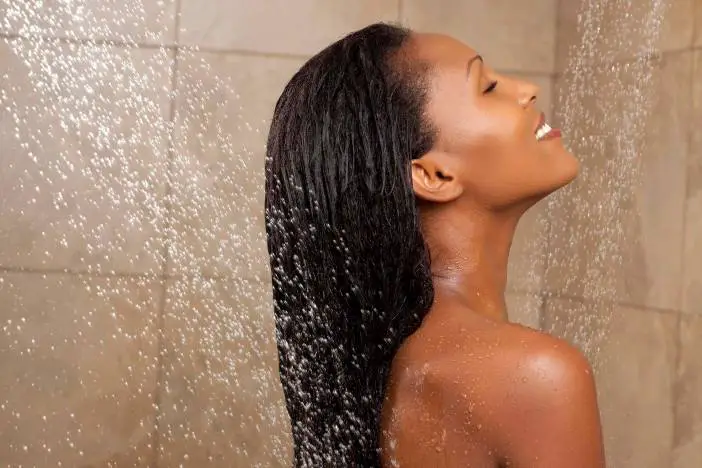Imagine having to use products on your hair and not get the results you desire. What exactly could be the problem?
Some natural factors can hinder and propel your hair growth. They include your hair texture and hair porosity. For afro-textured hair, hair porosity is important because it determines how well your curly hair takes in moisture.
So, you see why it’s important. You need to take in products and treatments, and how well your hair can absorb the beneficial treatment is hinged on what type of porous hair you have.
That’s why you have to find your porous level. Once you know your hair porosity level, you can use the right products and the right routine to maintain and grow your healthy hair.
What is Hair Porosity?

Hair porosity is simply how well your hair absorbs and retains moisture, water, and hair products. It’s how your hair cuticle takes in oils and products or how fast they pass through the cuticles.
There is high porosity, low porosity, and medium porosity hair. These levels of hair porosity are based on the features of your hair cuticles.
Each hair strand has three layers. The cuticle is the outer layer, while the cortex is the middle and thickest layer of the hair. And the medulla is the central part of the hair that is delicate and soft.
Healthy hair needs to be moisturized and hydrated from the cuticle to the cortex. However, how your cuticles are open will determine how fast or well your hair retains moisture.
For instance, if the cuticle is open and raised, then it is high porosity hair. Moisture easily slips in and slips out. It is hard to retain moisture when you have high porosity hair.
On the other hand, if the cuticle is closed and flat, it is low porosity. Low porosity hair doesn’t absorb water as fast as high porosity, but it retains moisture.
Therefore, for low porosity, getting the moisture in is the task. On the other hand, getting the moisture to stay in the hair cuticle is the task of high porosity.
Meanwhile, medium porosity is just perfect. The cuticle is perfectly raised that it absorbs enough moisture at a time, and it retains the moisture absorbed. It is the perfect hair anyone should strive for.
However, I would like to state that having high porosity or low porosity hair does not mean you have damaged or unhealthy hair. Not treating the porous level of your hair, as you should, is what leads to dry and damaged hair.
That’s why you need to conduct a hair porosity test to find out what porosity level or category your hair is.
Hair Porosity Test

You can conduct your hair porosity test in these simple ways:
1. The Water Cup Test
This is a simple test that involves testing your hair strands to check how fast it sinks. There are several steps you need to take before this hair porosity test. But you can follow the guide below:
- Take a few fallen hair strands after shampooing and conditioning your hair.
- Make sure the strands are dry.
- Take out a transparent glass or bowl filled with water.
- Drop the strands of your hair into the bowl.
- Watch how your hair reacts in the water.
If your hair sinks almost immediately, that means you have high porosity hair. However, if it floats for a while before sinking slowly, it means you have low porosity. Meanwhile, medium porosity sinks slowly to the bottom.
Pro Tip: Make sure the tested strands are as bare as possible from product and natural oil. Oil floats on water. If your test strands are silky or oily, they might float, which wouldn’t yield a verified result.
2. The Spritz Test
This is a simple way of conducting a hair porosity test. It involves spritzing your hair with water when it is dry.
You need to take note of how fast your hair absorbs the water. If your hair reacts to the moisture by absorbing it almost immediately, then it is high porosity.
On the other hand, if the water sits on your hair for a while or is absorbed slowly, it means you have low porosity hair. You would most likely see pebbles of water sitting on your hair before it is finally absorbed.
This hair porosity test is simple and fast. However, you have to be sure your hair is not oily and product buildup is at its minimum.

3. The Shower Test
This is closely the same as the spritz test. However, you would be testing your hair strands in the shower. Before you shampoo your hair under a shower, take in the reaction of your hair to water.
All you have to do is stay under the shower and let the water run down your tresses. How fast or slow water is absorbed before adding your shampoo will determine your hair’s porosity.
If your hair falls easily after being weighed by water, it is high porosity hair. On the other hand, your hair feels heavy but it doesn’t fall from the pressure of water for a while. Then it is low porosity.
Read also: Grow and Shine Your Hair With Top-Rated Hair Serum
4. The Slip Test
This is a dry method of testing your hair’s porosity. Take a strand of your hair from your scalp. Stretch it out and hold it between the index finger and thumb of one hand. Use your other hand’s free thumb and finger to feel your cuticle.
If your finger slides freely between your hair strand with no bumps and it feels dense and hard, then you have low porosity. On the other hand, if your strand feels rough, dry, or breaks from the tough, your hair is high porosity.
Meanwhile, medium porosity hair is not rough and it isn’t too smooth or hands on the fingers.
Frequently Asked Questions

Is hair porosity test scientifically proven?
No, they are not. These hair porosity tests have not been scientifically proven. These tests are based on a “observe and report” system.
There has been no scientific linkage of any hair porosity test. However, there are theories and rules made from other people’s observations of their hair and the result they found. This is what created the hair porosity tests.
Can my hair porosity test be affected?
Yes, it can. Your hair porosity test can be affected by several factors.
Oils and residue can give you the wrong result. That is why your hair needs to be stripped of oils, product buildup or residue, or natural oils before testing.
If your hair is stripped to the bare minimum, you will get the best possible hair porosity test result.
Also, heat can influence your hair porosity test. Testing your hair porosity just after using a heating tool would influence your test.
For example, if you have low porosity hair and you use a hot tool like a dryer before testing, your hair might feel like high porosity.
This is because hot tools raise the hair cuticles, so for that period, your hair cuticle is open and wide to take in moisture.
You should test your hair after drying. But be sure to naturally dry your hair so as not to hinder the result.
What causes hair porosity?
Genetics is the most natural cause of hair porosity. When a certain type of hair runs in the family, it is only natural it gets passed down to you.
For instance, if your family has a history with low porosity hair, it’s most likely you will have low porosity hair.
Also, heat and hot tools are a cause of high porosity hair. When you expose your hair to chemicals and hot tools like straighteners, blow dryers, and curl irons, you are constantly influencing the cuticles of your hair.
Hot tools open up the cuticles and when it does so too often, it could lead to your hair permanently being raised and open, thereby allowing moisture to leak out and not be retained.
Additionally, exposure to the sun could lead to hair porosity changing. Ultraviolet radiation can increase the porosity of your hair. That’s why you have to cover and protect your hair always.

Takeaway
You need to take a hair porosity test to find the porous level of your hair. This would also guide the products you buy and the routines to practice.
If you want to grow healthy hair, knowing whether you have high, medium, or low porosity hair would save you immensely because your hair care routines and products become targeted at treating the specific hair type.
Also, it becomes much easier to know what works and doesn’t work for you. For instance, protein is needed for high porosity hair than for low porosity hair.
With this, you know to go for protein-rich products if you have highly porous hair, and to stay away from them if you have low porosity.
Your lifestyle becomes more guided and your routine becomes ordered. And you wouldn’t have to worry about going in circles with your hair again
Thanks for reading. Africana Fashion provides relevant hair care articles to suit your lifestyle and healthy hair journey.







